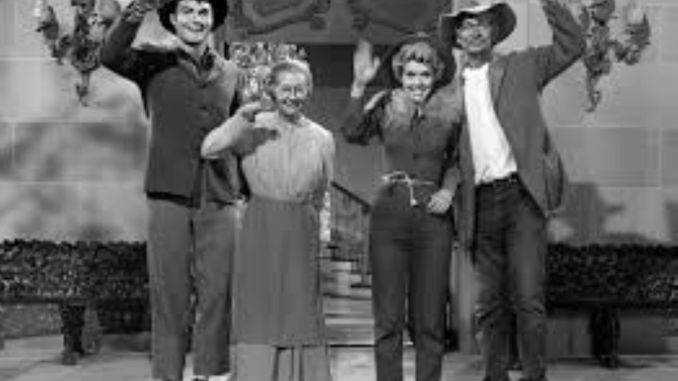
Comedy, at its best, is an act of connection — not just laughter for laughter’s sake, but a shared understanding between performer and audience. The difference between laughing at someone and laughing with them may seem subtle, but it’s everything. It’s the difference between ridicule and art, between mockery and joy.
And for The Beverly Hillbillies, that difference was intent.
The Power of Being “In on the Joke”
When someone trips and falls, it’s only funny if they meant to do it. Intent changes the entire dynamic — it transforms embarrassment into entertainment, turning vulnerability into control. That was the heart of The Beverly Hillbillies: a show that leaned into its silliness with full awareness, inviting the audience to laugh with its characters rather than at them.
The Clampetts weren’t fools; they were exaggerated reflections of innocence and simplicity in a world obsessed with sophistication. The humor wasn’t cruel — it was communal. Viewers weren’t mocking them; they were laughing at the absurdity of modern life right alongside them.
Misunderstood by Critics, Loved by Millions
When The Beverly Hillbillies premiered in 1962, it became an instant cultural phenomenon — but not everyone was impressed. Critics often dismissed it as “lowbrow,” calling it “corny,” “simple,” or “rural nonsense.” Many of those same critics, however, missed what the show’s audience instinctively understood: it was supposed to be corny.
In an interview with the Times-Tribune, series star Buddy Ebsen, who played Jed Clampett, explained that this was all intentional. “We were designed to be corny,” he said. “That was part of our charm.”
Ebsen argued that the so-called simplicity of the series was its greatest strength. “The Hillbillies looks pretty good today,” he said, “particularly when you compare it to what some of the current half-hour comedy shows offer.”
Corny by Design — and Proud of It
The show’s creators, Paul Henning and his team, never set out to create cutting-edge satire. Instead, they wanted to craft something wholesome, familiar, and accessible — a show that poked gentle fun at both city slickers and country folk without malice toward either.
Every “yee-haw,” every fish-out-of-water gag was deliberate. It wasn’t ignorance; it was commentary. The humor came from how the Clampetts’ down-home values clashed with Beverly Hills excess — a dynamic that still resonates today.
By embracing its homespun charm, The Beverly Hillbillies managed to connect with millions of viewers who saw themselves, their families, or their neighbors in those same small-town quirks.
Freedom, Taste, and the Art of Knowing Your Audience
But as Ebsen pointed out, intent only works when you have the freedom to express it — and the trust of your audience to understand it. In a 1970s interview with the Cincinnati Enquirer, he reflected on this delicate balance.
“Sometimes you have to impose taste on people,” he said. “When it becomes apparent there is a lack of taste, I think censorship is indicated.”
It was a bold statement — one that revealed Ebsen’s complex relationship with comedy. He believed that even humor needed boundaries, not in a restrictive way, but to protect the craft from becoming cheap or thoughtless. True comedy, in his eyes, came from intelligence and purpose, not shock or vulgarity.
The Lasting Legacy of Intentional Humor
More than half a century later, The Beverly Hillbillies still stands as a reminder of how intention shapes art. Its jokes might seem dated, its sets simple, but its comedic heart beats as strong as ever.
The show wasn’t about laughing at “hillbillies.” It was about laughing at how strange modern life looks when viewed through the eyes of someone honest and unpretentious.
Buddy Ebsen and his cast knew exactly what they were doing — and that’s what made the laughter genuine.
The Beverly Hillbillies proved that corny isn’t careless. It’s a choice. And sometimes, the smartest thing a comedy can do is wear its heart — and its humor — proudly on its sleeve.
